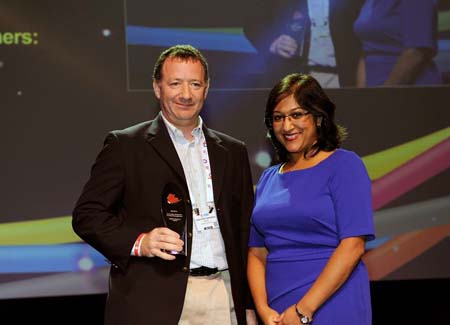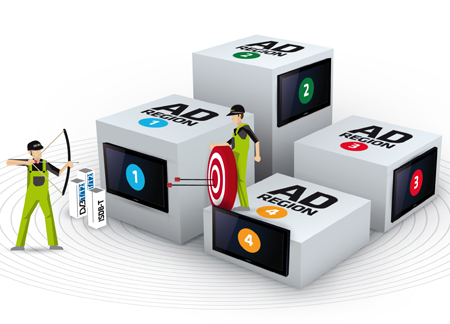Tedial will showcase Tedial Evolution, an enhanced version of its Media IT platform, for the first time in Europe at IBC 2015. Tedial Evolution significantly extends MAM functionality with advanced search/indexing tools, new services to surf/explore archives, and improved integration between archive and workflow engines to reinforce a collaborative environment. tNEW GUI: Tedial Evolution offers a […]
 Tedial will showcase Tedial Evolution, an enhanced version of its Media IT platform, for the first time in Europe at IBC 2015. Tedial Evolution significantly extends MAM functionality with advanced search/indexing tools, new services to surf/explore archives, and improved integration between archive and workflow engines to reinforce a collaborative environment.
Tedial will showcase Tedial Evolution, an enhanced version of its Media IT platform, for the first time in Europe at IBC 2015. Tedial Evolution significantly extends MAM functionality with advanced search/indexing tools, new services to surf/explore archives, and improved integration between archive and workflow engines to reinforce a collaborative environment.
tNEW GUI: Tedial Evolution offers a completely new user experience designed to speed both manual and automated workflows. Built on the solid, tried and trusted MAM platform, the new HTML5 User interface keeps frequently used tools on the screen for improved performance. True multiscreen (smartphone, tablet, etc.) and multi-platform (IOS, Android, Windows, etc.) operations allow users to manage tasks, validate media or monitor workflows status from mobile devices.
The interface is fully customisable for individual preferences or work assignments, including different metadata views and screen configurations, with an integrated activity monitor and unified view of archives, workflows and business processes. The new interface also features a configurable “logging board with shortcuts for actions and actors, specially designed for sports and live events. Inside the User interface is an improved media player with audio waveforms, thumbnails and locators displayed in the timeline.
NEW Search/Indexing Engine: The Search/Indexing engine has been extended to organise/search collections and other object related entities, to indexing very large databases via shared indexes, and to automatically tag descriptive metadata based on scoring of texts using stop words. The system now autocompletes user keyword inputs and generates suggestions for every entry as it is typed! It offers new methods to surf the MAM through departments using an Amazon.com style facets category and/or group entities. The system can also auto-tag, relating assets based on most relevant tags.
True Object Relational Database: Harnessing the power of a true Object Relational Database, a new set of tools provides a service to manage group entities, a multi-level classification schema (collections, albums, series, projects, rights, delivery packages, etc.) based on dynamic, changing relations. Employing the power of a real Object Relational Database, entities are logged as assets, which can now be a repository for all shared information. Assets are categorized as members of multiple entities, according to the user needs.
EXPANDED Mediaset: All information related to an asset can be explored from the Mediaset view including Metadata, media files, attached documents, logical versions, processing or delivery orders. Moreover, related assets (physical versions, promos, parts) and entities can be explored from the original master asset wherever they are located or associated. As part of Tedials evolution to support DAM operations, full audio support is now available in the basic MAM. Tedial Evolution offers tight Integration with Rights management systems to ensure media is Rights aware.
Extended Business Process Management Services: Business Process Management services have been extended to reinforce collaboration, allowing several users to work with the same asset. New collaborative processes can be defined using an extended library of foundation workflows and activities.
Tedial Evolution embraces the IMF standard
Always adopting SMPTE and IT standards as the best way to address the need to future proof the development of world-class software tools, Tedial has implemented the IMF schema within its MAM and workflow systems, as well as the AMWA FIMS AS-11 specifications.
Tedial supports the SPMTE standards of MXF, BXF and AXF and the BPMN 2.0 Notation standard for enhanced interoperability.
















































































